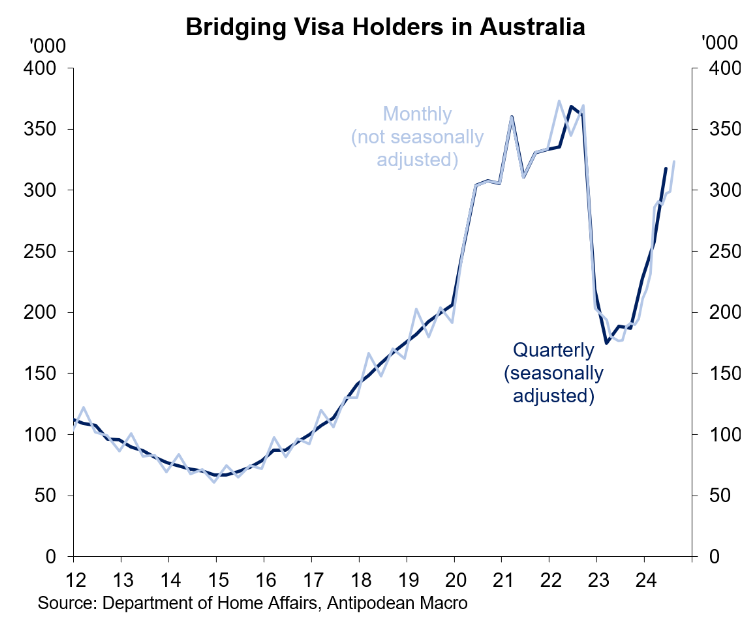The e61 Institute has published an interesting report examining so-called “visa hopping” by international students to extend their stays in Australia.
e61 found that the share of visa hoppers has increased “very sharply over recent decades, from about 2.5% for those receiving their graduate visa in 2009 to over 25% for those receiving it in 2018”.
“Migrants from South Asian countries — specifically Nepal, Pakistan, Bangladesh, India, and Sri Lanka — are the most likely to engage in visa hopping”, e61 says.
Visa hoppers are typically low-skilled migrants that earn significantly less than other graduate visa holders or local graduates. Specifically:
- they earn 20% less than other graduate visa holders on average;
- they earn 10% less than other graduate visa holders who work in the same occupation;
- they earn a similar salary to other graduate visa holders who return to their home country after their graduate visa expires; and
- they work in relatively lower-skilled occupations compared to other graduate visa holders.
“Our analysis documents that visa hoppers tend to be migrants with weaker labour market performance and skills trying to stay in Australia”, e61 says.
It supports the Albanese government’s attempt to prevent international students from making an onshore application for additional student visas after completing their initial studies and after their graduate visa expires.
“Restricting access to student visas after the expiration of the graduate visa could encourage low-earning migrants, often employed in low-status jobs, to return home”, e61 says.
“This could, in turn, raise the average quality of the pool of prospective migrants”.
I agree with e61’s analysis. Stopping visa hopping makes perfect sense. The problem the government faces is that student visa holders are transitioning onto bridging visas instead:

“Bridging visa numbers spiked to 323,583 from 191,235 a year ago, as former students appealed against the cancellation of their visas or denial of applications”, The AFR’s Julie Hare noted.
As a result, attempts to stop visa hopping appear to have failed.
“A lot of dodgy providers are doing what they can to recruit as many students as they can before the caps come in on 1 January”, Helen Duncan from the Migration Institute of Australia warned.
In summary, rejected student visa holders are instead using bridging visas to extend their stay in Australia. And this is hampering the federal government’s fight against dodgy student visas by clogging the appeals process.
The government must do two things to tighten the student visa system.
First, it must make entry into Australia far more stringent by:
- Further tightening English-language standards and requiring prospective students to complete entrance examinations before being permitted to study in Australia;
- To demonstrate students’ ability to sustain themselves and study, financial requirements must be increased with funds paid into an escrow account before arriving in Australia.
- The direct link between study, work, and permanent residency must be severed.
These reforms would limit the number of international students while increasing overall quality. They would transform international education into a genuine export business, improve graduate quality (and productivity), and reduce net overseas migration and demands on housing and infrastructure.
Second, the federal government must significantly tighten the appeals process and the operation of the Administrative Appeals Tribunal to make it more difficult for rejected visa holders to transition to a bridging visa.
Temporary visas must be temporary, and holders must be required to return home after their visas expire.

